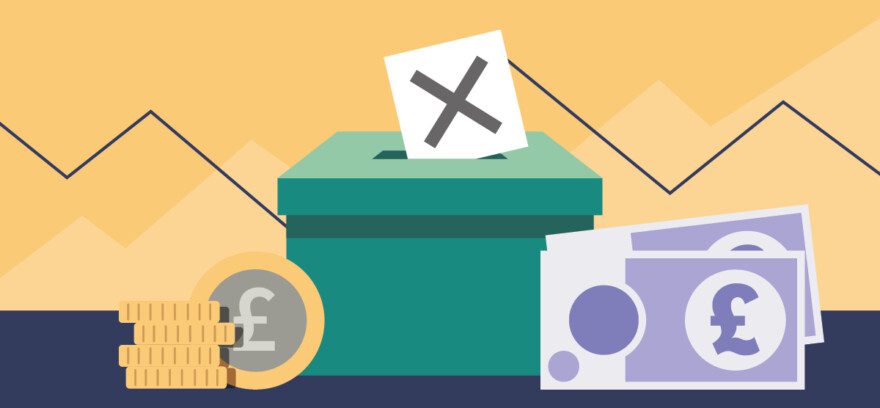UK markets pulled back this week with the FTSE 100 Index falling by 1.32% to trade at 8,150 points at the time of writing.
The UK economy stalled in April, posting zero growth for the month, compared with a 0.4% expansion in March, according to data published by the Office for National Statistics on Wednesday. This marked a sharp slowdown from the 0.6% growth figure for the first quarter of 2024, which ended last year’s technical recession. The latest figure matched economic forecasts and came as the wettest April for more than 10 years hit the services sector and construction.
The figures were a blow to Prime Minister, Rishi Sunak as he attempts to reboot a faltering election campaign, with the Conservatives remaining around 20 percentage points behind the opposition Labour party in opinion polls. However, economists said that output was still likely to grow over the second quarter, as strong wage growth, lower inflation and drier weather helped consumption bounce back.
UK wage growth remained strong in the three months to April as a rise in the minimum wage boosted pay packets despite a slowing jobs market. The Office for National Statistics said growth in average weekly wages, including bonuses, remained steady at 5.9%, unchanged from an upwardly revised figure of 5.9% for the three months to March.
Excluding bonuses, annual growth of 6% in average wages was also unchanged from the three months to March, in line with analysts’ expectations. However, there were also signs of the labour market cooling.
Unemployment rose on its headline measure, while there was a slight decline in the number of payrolled employees and in job vacancies and an uptick in claims for jobless benefits, according to the Office for National Statistics.
Elsewhere, the Labour party revealed its manifesto including plans to raise £8.6 billion in tax as he promised to “relight the fires” of economic growth and bring “Conservative chaos” to an end. The figure includes a clampdown on tax avoidance and evasion that contrasted with more than £17 billion in tax cuts pledged by Prime Minister, Rishi Sunak.
Commodity markets
In the commodity markets, Brent crude futures traded around $82 per barrel on Friday and are set for a weekly rise, recovering from a sell-off on the OPEC+ plan to increase production in the fourth quarter. Oil market analysts generally viewed the sell-off last week as an overreaction. OPEC stuck to a forecast for relatively strong growth in global oil demand for 2024 and Goldman Sachs projected solid US fuel demand this summer.
Russia pledged to meet its output obligations under the OPEC+ pact, after saying it exceeded its quota in May, further supporting the market. Stricter adherence to the current quotas should more than offset any potential increases from the group of eight oil producing countries under the gradual phase out of their voluntary cuts. This should see the oil market remain well supported over the next 18 months, according to analysts.
Although prices were held back after the US Federal Reserve held interest rates steady and pushed out the start of rate cuts to as late as December, with comments from Fed officials stoking worries that economic growth could slow and dampen fuel demand.
Gold Prices traded around $2,315 on Friday, and are set for a weekly fall, after the US Federal Reserve projected just one interest rate reduction this year, dashing investors’ hopes of two cuts, while a cooler than expected inflation report limited the dip.
Equity markets
US equity futures were mixed on Friday, after the S&P 500 and Nasdaq Composite closed at record highs for four days straight. In Thursday’s regular session, the Dow Jones Industrial Average fell 0.17%, the S&P 500 rose 0.23%, while the Nasdaq Composite gained 0.57%.
US consumer price inflation fell to 3.3% in May, raising expectations of early interest rate cuts and boosting the stock market. US producer prices also unexpectedly fell in May, with the headline producer price index falling by 0.2% last month, after advancing by an unrevised 0.5% in April. Core prices were flat, after seeing a 0.5% increase the prior month.
However, optimism over cooling inflation was not enough to hold back the dollar. The US currency rebounded after Federal Reserve officials on Wednesday unexpectedly forecast only one interest rate cut this year, and pushed the start of rate cuts to as late as December. Federal Reserve, Chair Jerome Powell said policymakers were content to leave rates where they are until the economy sends a clear signal that something else is needed, through either a more convincing decline in price pressures or a jump in the unemployment rate. Nevertheless, the market continues to be optimistic, with Fed funds futures trades now seeing two cuts this year as likely, with a first cut in September seen as a 68% probability, according to the CME Group’s FedWatch Tool.
The European Central Bank and the Bank of Canada have already begun cutting rates, and may cut again before the Federal Reserve begins easing.
Elsewhere, the number of Americans filing new claims for unemployment benefits increased to a 10-month high last week, suggesting the labour market is losing momentum and keeping hopes of a September interest rate cut from the Federal Reserve alive.
The information provided in this communication is not advice or a personal recommendation, and you should not make any investment decisions on the basis of it. If you are unsure of whether an investment is right for you, please seek advice. If you choose to invest, your capital may be at risk and the value of an investment may fall as well as rise in value, so you could get back less than you originally invested.
